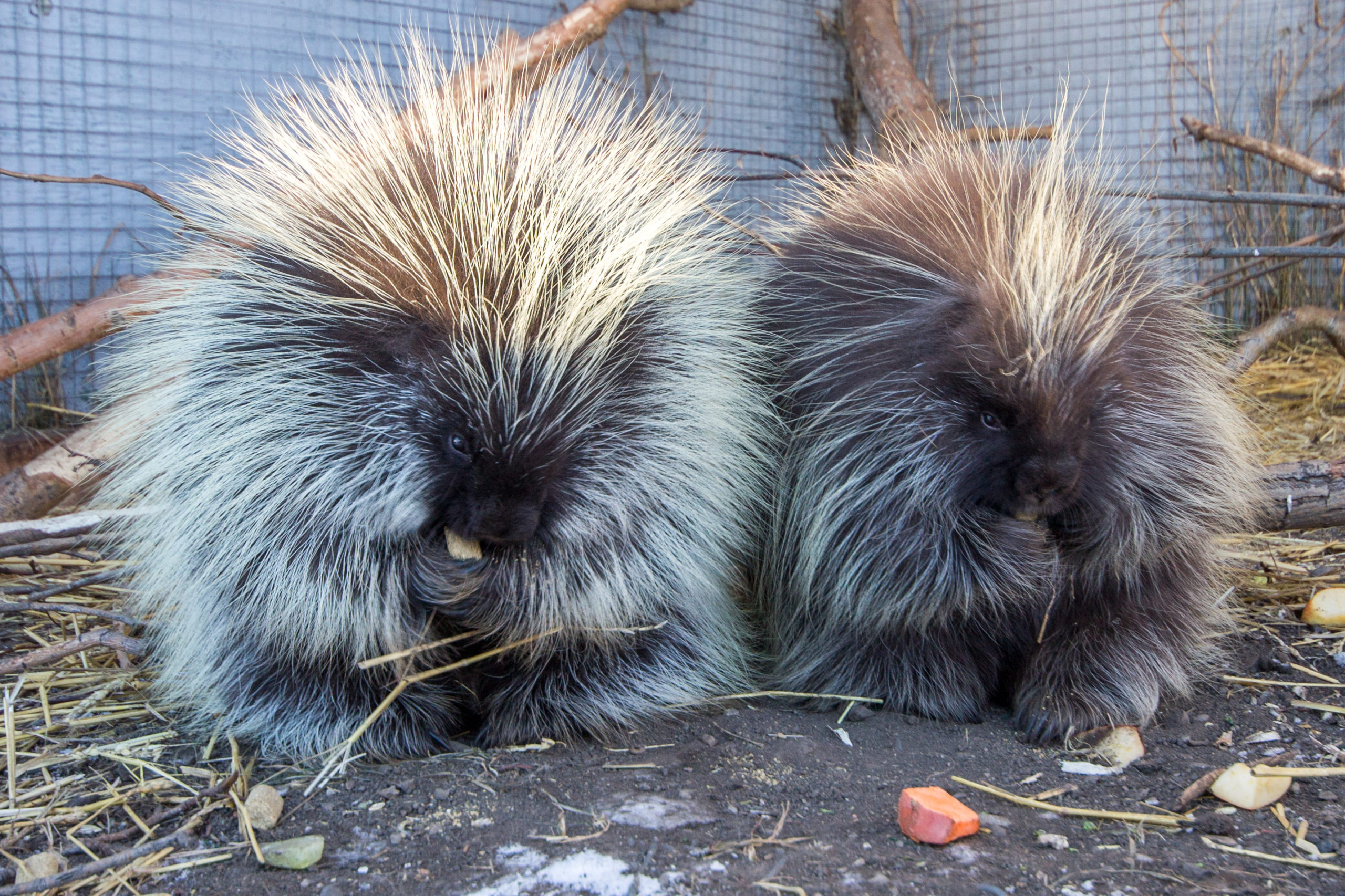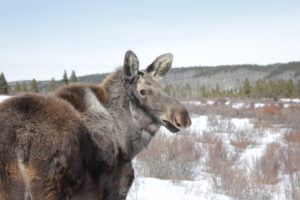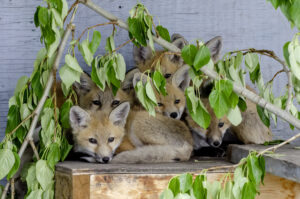By Chelsea Blyth
Living alongside porcupines in urban settings or while camping, involves understanding these unique creatures and taking certain precautions to ensure peaceful coexistence.
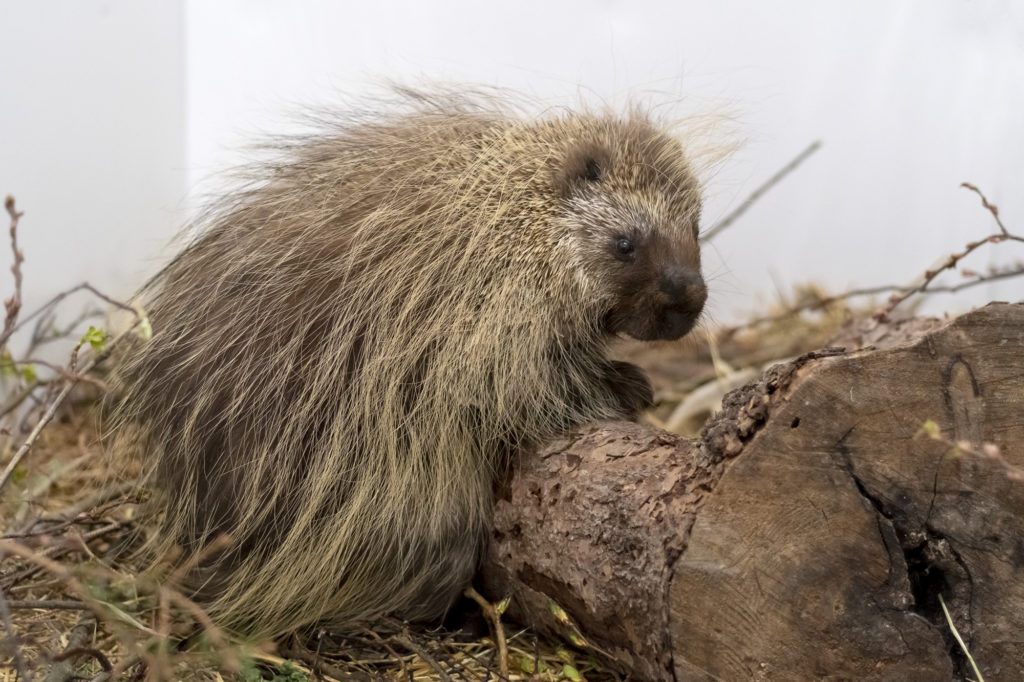
Porcupines are the second largest rodent in Canada.1 They are primarily nocturnal and herbivorous, covered in sharp quills that serve as a defense mechanism against predators. They are generally shy and non-aggressive, but will defend themselves if threatened. In urban settings and camping areas, porcupines are attracted to salt, which is found on roads treated with de-icing salt and on sweat-soaked items such as clothing, shoes, and camping gear. This attraction can lead them to venture into closer proximity with humans and pets.
To minimize the risk of encounters, here are some essential tips:
1. Keep Your Dogs on Leashes
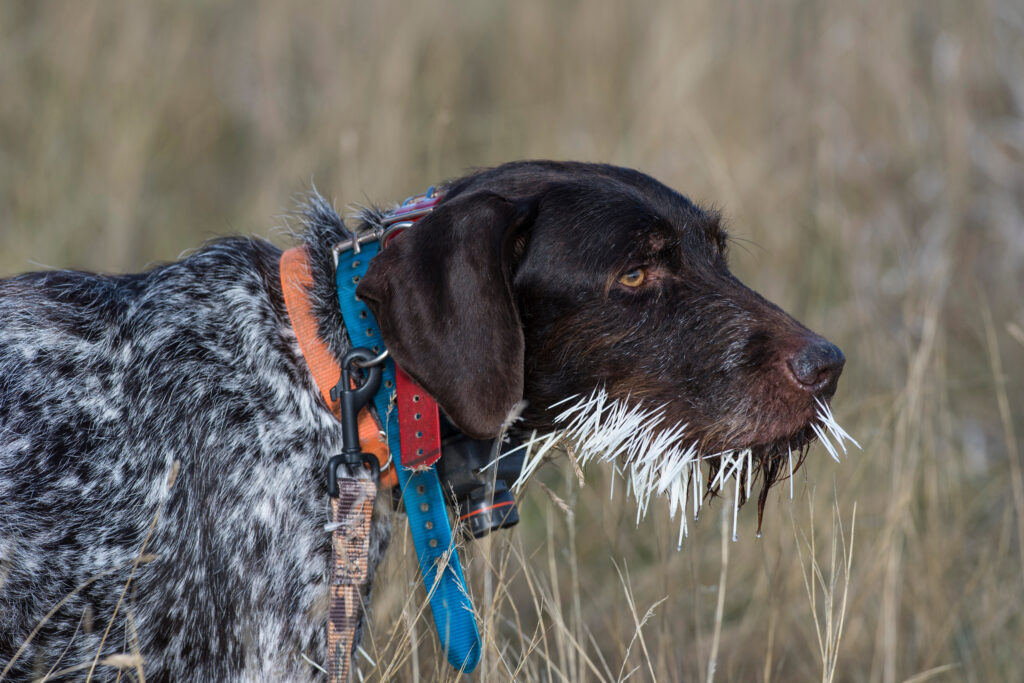
Porcupines pose a particular risk to curious dogs. Always keep your dogs on leashes during walks or hikes, especially in areas known to be inhabited by porcupines.2 A dog sniffing around a porcupine can quickly lead to a painful encounter, as porcupines will defend themselves by embedding their quills in the perceived threat.
2. Manage Salt Sources
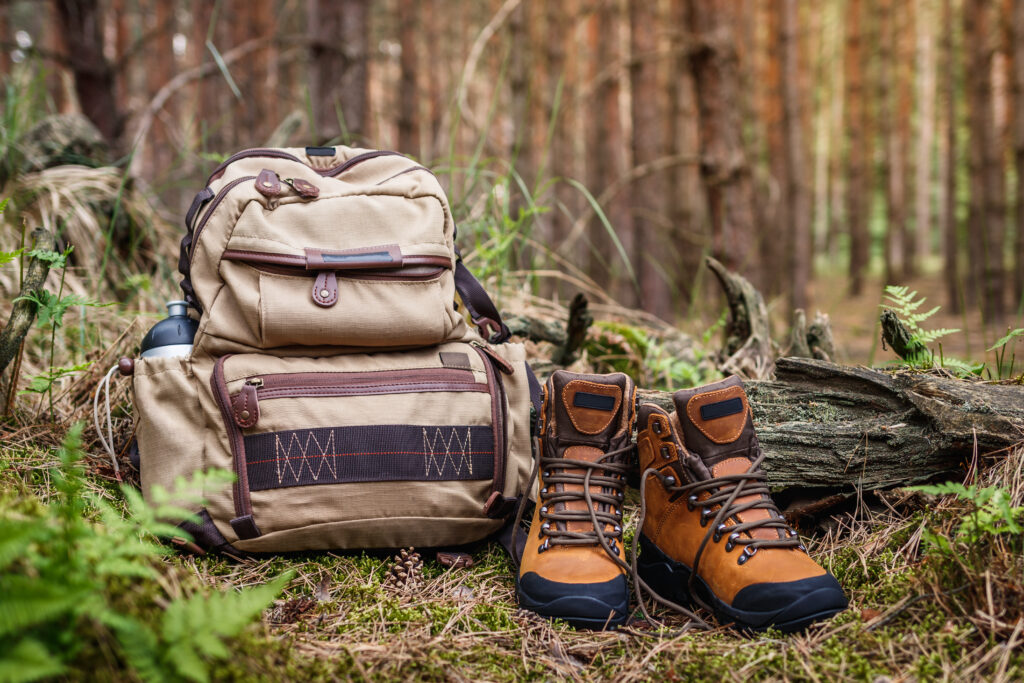
Avoid leaving sweat-soaked clothing, shoes, or gear outside, particularly overnight. Porcupines are drawn to the salt left by human sweat. Additionally, be mindful of salt on roads and walkways, especially in the winter months, as this can attract porcupines into more populated areas.
3. Secure Food & Trash
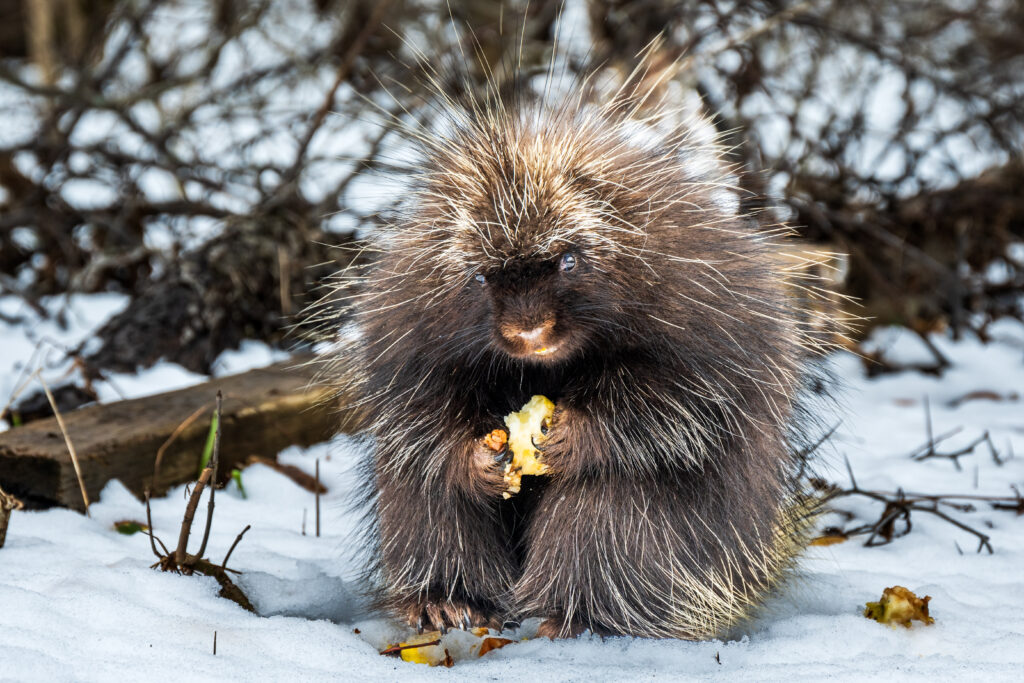
While porcupines primarily eat plants, they may scavenge for food scraps if available. Ensure that food waste is properly stored in sealed containers and disposed of correctly. When camping, use bear-proof containers or hang food out of reach to deter porcupines and other wildlife.
4. Maintain a Respectful Distance
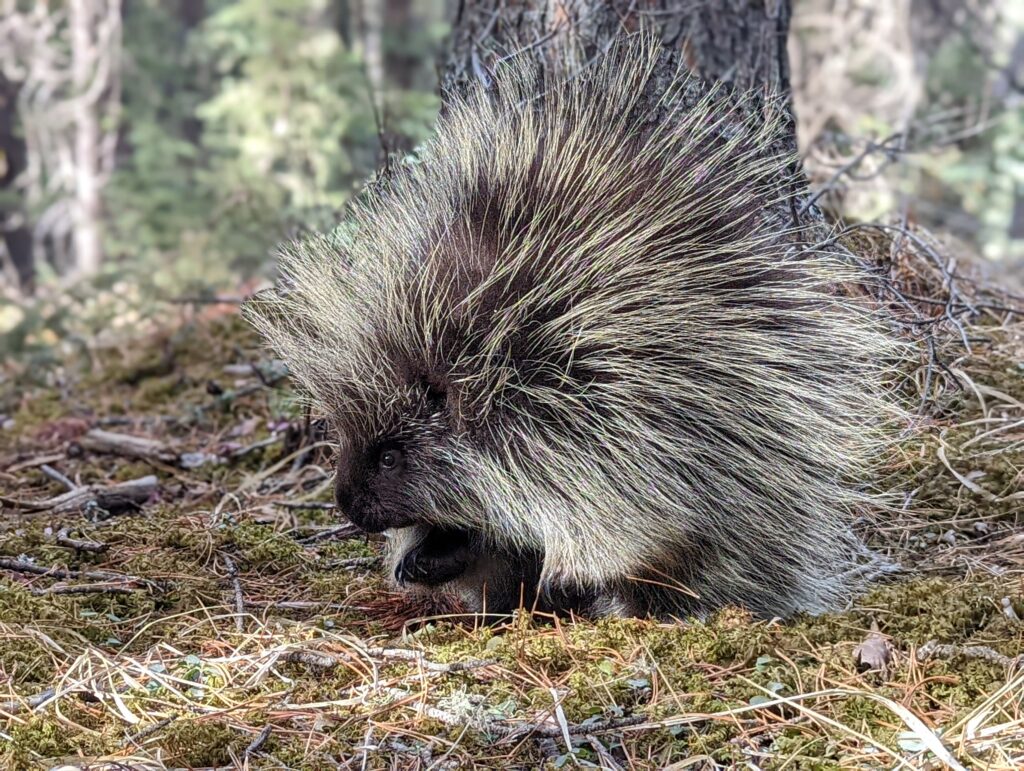
If you encounter a porcupine, keep a safe distance. Do not attempt to touch or feed the animal. Porcupines can become stressed by close human interaction, which can lead to defensive behaviour.
5. Protect Property
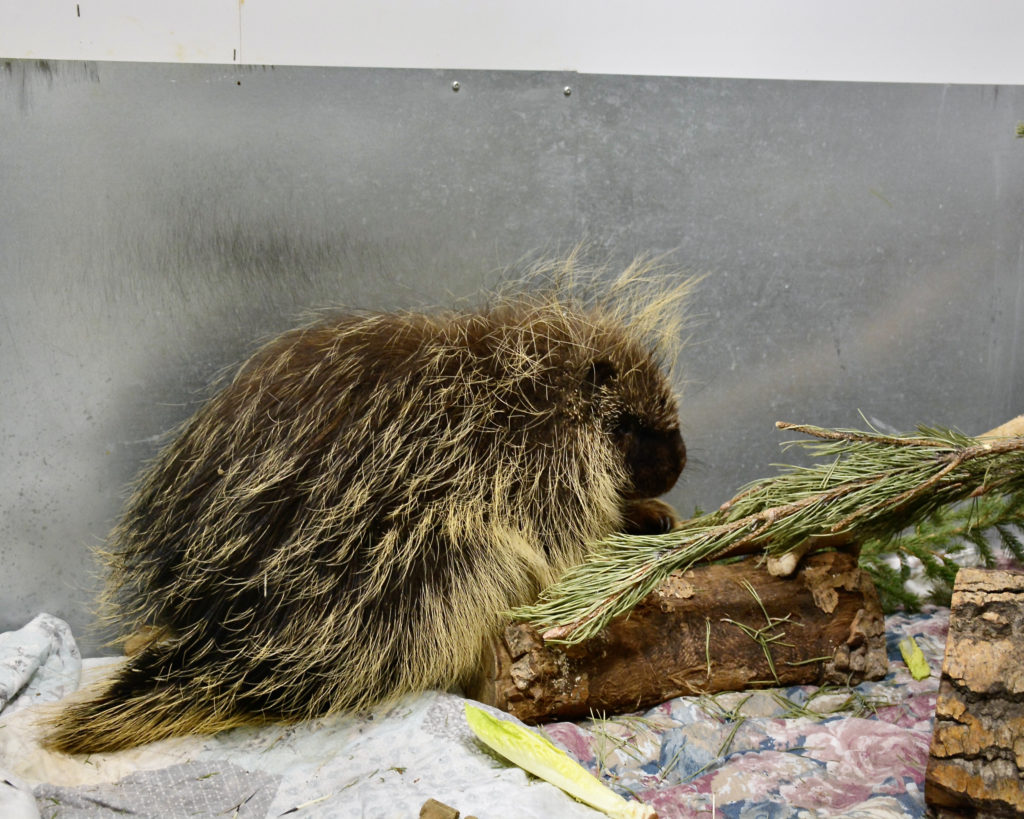
Porcupines may gnaw on wooden structures, including decks and tool handles, to fulfill their need for salt and minerals.3 Using fencing or other barriers can help protect these areas from porcupine damage.
By following these guidelines, you can help ensure a harmonious coexistence with porcupines, allowing both humans and these fascinating animals to share urban and natural spaces safely and respectfully.
References
- Government of Canada. “Porcupine.” August 4, 2015. https://tidcf.nrcan.gc.ca/en/diseases/factsheet/42
- Government of Alberta. “Human Wildlife Conflict – Porcupines.” 2024. https://www.alberta.ca/porcupines
- Smith, Donald A. “Porcupine.” Canadian Encyclopedia. March 4, 2015. https://www.thecanadianencyclopedia.ca/en/article/porcupine

